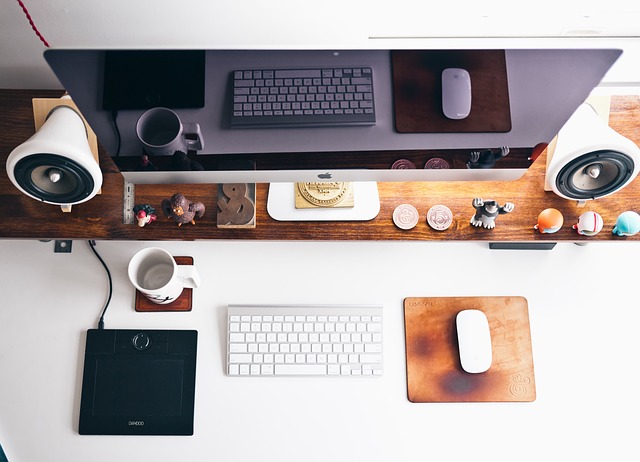Originally published on February 4, 2019, reprised and edited for Covid considerations on August 16, 2020.
Comfort, Productivity, and Creativity: The Hallmarks of An Ideal Home Office
Prior to Covid, Oregon ranked 4th in the Nation for percentage of work-at-home employees with nearly 108,000 estimated workers working from their home office. Those numbers have risen exponentially as companies transitioned their employees off-site. Creating and making the most of dedicated home offices or eking out corners of kitchens, playrooms, and family rooms for professional purposes is the new norm.
Here are some ideas to organize work space to enhance your creative flair and productivity.
Each of these recommendations are for ideal situations, but I realize not all homes can accommodate the ideal. Work-arounds might be needed. My hope is that these suggestions will stimulate your imagination.
1. Select a room that is quiet away from playrooms, laundry rooms, and high traffic areas to avoid extraneous noises during business calls and distraction. If possible, choose a room with a door. To aid in sound-proofing use carpets or throw rugs and wall decor to dampen excess noise. Throw rugs on walls are a unique way to decorate and diminish unwanted sound.
2. Choose a room that is bright and airy to remain alert and activated. Conversely place your desk and computer out of direct light to avoid screen glare or use blinds/curtains.
3. If you offer onsite client services, locate your office near an external entryway for easy client access, and close to a bathroom. This will reduce wandering through your home especially if it is not as tidy as you wish. Store rubbing alcohol, sanitizers, cleaning rags, extra masks and potentially gloves in cabinetry or nearby linen closet. Keep lined disposal bins handy for laundry and waste. Check with your local Health Authority for guidance and restrictions.
4. Ensure adequate electrical outlets near work spaces to avoid electrical overload and to reduce tripping hazards. Surge protected power strips increase the number of available outlets while also protecting your electronics during storms and power outages from electrical surges. Smart power strips can detect when a device is in standby mode so they can cut off power and save energy. They come in a variety of sizes, colors, styles, and # of outlets.
Saford carpet cord covers available at cabletiesandmore.com. No adhesive residue and reduces tripping hazards. Not recommended for cut pile carpet.
5. If you need to run cords or cables across a room, use cord covers. Covers come in a variety of colors and designs. Check to ensure that adhesives are compatible with your flooring. Cable disguisers are also available if you find dangling cables unsightly. I use velcro strips to attach cables to the back legs of my desk.
6. Remove all items from the room that are not office-related to maximize space and limit distractions. If virtual meetings and presentations dot your calendar, then keeping your background camera-ready for a more professional look is imperative. If your office is your kitchen or dining room, straighten after each meal. You’ll be prepared for last minute virtual conference calls without the stress.
Go vertical with magazine racks for file storage.
7. Use screens, curtains, or bookshelves, or partitions to divide the room for multiple users. Select partitions with built-in shelving to add storage space. Try noise-cancelling headphones if noise is a distraction.
8. Designate zones in the room. For example one side of the room is for professional file storage and supplies, the opposite side for personal files. Otherwise, divide file cabinets or credenzas to clearly delineate purpose. Label accordingly.
9. Use vertical spaces for storage such as magazine racks to hold file folders and postal mail baskets if horizontal storage is minimal and to keep your desk clutter(less).
Slide out drawer for printer from Allmodern.com
10. Place equipment and supplies within easy reach to save time or alternatively, place them out of reach to encourage movement and blood flow every so often. Use carts to roll away printers or other peripherals or stow away in cabinets with slide out shelving if the printer is on the lighter side.
For more practical tips for laying out your home office to maximize productivity and creativity, contact ThePracticalSort.com.







